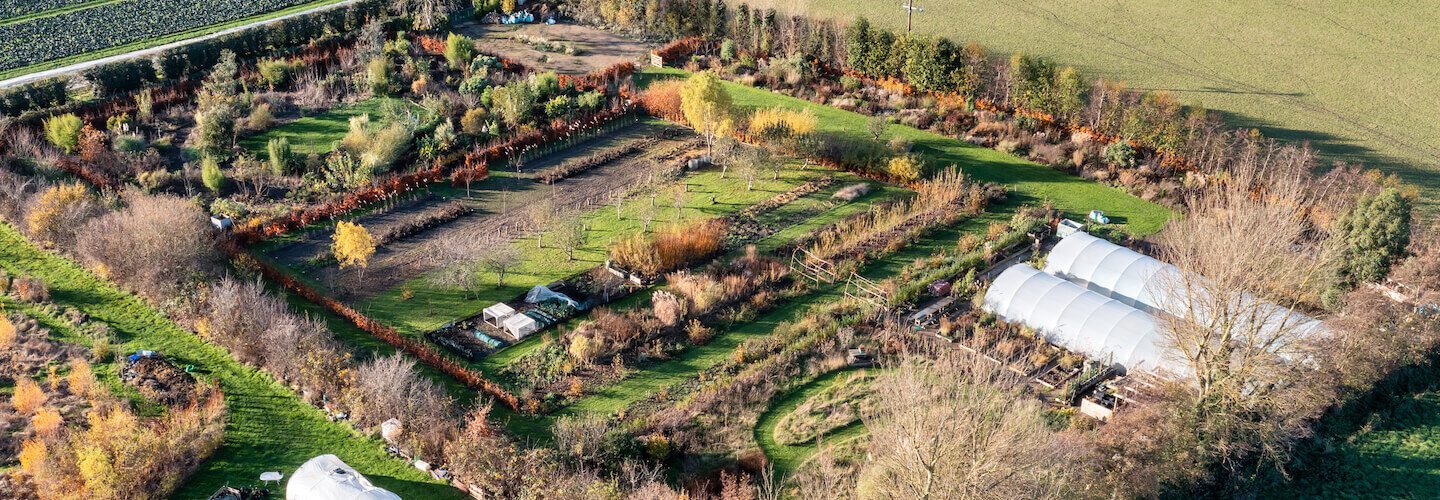
Where do you start when you are lucky enough to have a blank canvas, well for us it was multi-layered but this is the basics.
Create a designed plan to scale that can be implemented in stages as both time allows and slowly enough to allow wildlife to move around the site easily while an area is under construction.
Make spaces of beauty to our eyes with different functions and seasons of ‘peak’ interest – plants tree’s shrubs, hedges to compartmentalise the land and to slow the wind, its fierce here! And with climate change in mind, a diverse range of woody plants and trees. Some will be winner and some will lose out, but by having a mixture of native and non-native long lived woody plants some will win out in the long run.
the land is our plant playground, but also our stock ground for the nursery, we grow plants first at the land and learn all we can about them so we can offer the best advice to gardeners on how to grow the plants we have.





It’s a bit bonkers that jungle! Yes, yes it is. Many of the plants growing here have no place really even being alive in a garden un the UK, so we push the boundaries of what’s possible. A wonderful aspect of growing exotics is at a time of year when other parts of the garden are looking tired, an exotic garden is looking its best.
For us it’s a piece of theatre, an escape from reality, you can instantly be transported to some tropical far flung corner of the world without leaving the comfort of the land, what fun!
Eucalyptus, bananas, sassafras, acacia. willows from Asia, birch from the Himalayas all put together in what some might say is an assault on the senses? Good, here the word good or bad taste has no place, vulgar is at home, garish is welcome and meretricious is our mantra.
But lurking under all that is still our core belief that, no matter where something comes from it can be in the most part useful to our native wildlife, food water and shelter, provide those things and wildlife will thank you, even in a jungle in east Kent.


Our gravel garden was born out of necessity, we needed a car park. All the recycled concrete would be sharply drained and act like a radiator storing heat from the sun. what plants like those conditions, well plants from Mediterranean “like” zones from around the globe would be perfect and a good excuse for further experimentation.
We never water the dry garden, not even when we plant initially, plants have to just get on with it or die. We have made several discoveries following this idea.
It may be trendy to have a dry garden but again right plants growing in the right place create a community that supports each other and gives the nursery more propagation opportunities and opportunities to learn. As gardeners one of the important things to observe is how well plants survive with poor conditions and a less than ideal initial start, for mass landscape planting where maintenance input is low, working out what plants will do well with minimal watering, feeding, pruning and general care is useful, again always learning.


The lockdown long border as we call it, because we hid on the land and planted 2,500 perennials 450 different varieties and species of plants during a spring and summer to never forget, lockdown 2020.
100m long and 6m deep with a narrow back path to access and maintain the planting, backed by alder and purple beech, this space is where we experiment primarily with perennials and plants that mix well with perennials such as small tree’s, roses, shrubs, sub-shrubs, bulbs and annuals
Designed to ‘peak’ in high to late summer with a heavy consideration to seed heads as we don’t cut the border back till march, it is also colour limited, no white, yellow, bright red or orange. Instead it is a moody colouring of sultry purples, red/purples and blues/lilacs with shades of pinks, when designing the border we took a whole year to consider the way the sun tracked in the summer and winter before deciding on the colouring as it has wonderful morning sun but no evening sun at all, so depending on when you see it, depends on how it feels.


As part of the overall design of the garden we have a number of walkways that both act as thoroughfares but like all of the land we try to make it beautiful. The nut walk will offers a different experience in time, a dappled walk that cuts from one side of the land to the other. We have 3 types of hazelnut growing all repeated in an avenue. The partial shade conditions will allow lou to underplant the nuts with all the shade loving plants we love, and as everywhere at the land the plants act as stock plants for the nursery.


Most traditional orchards have disappeared since the end of the second world war, such a shame. We had fruit on our wish list when designing the land and envisaging all the ways we wanted to use the space. 35 mixed apple, pear, plum, quince, medlar, mulberry, cherry, bullace, gage and more with paths mown creating islands of wildflowers, privet, yes privet! Planted as a informal hedge that will be aloud to flower for the bees, and leaves for the privet hawk moth (that’s what swung it for me) elderberry acts as another wild hedgerow helping to enclose the orchard in time giving it a secluded oasis for us and wildlife.
“ The Land is our plant playground... ”